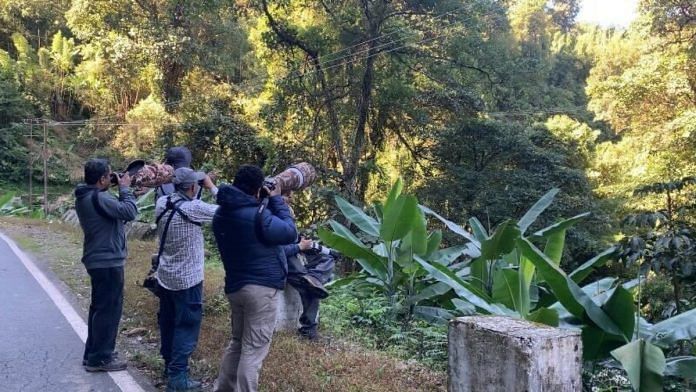Anini/Walong: For 40-year-old Dipen Molo, it has been a long-cherished dream to have a Kiwi farm in his village. But a search for better opportunities kept him away from home for nearly three decades. Ebamee is a border village and lies in Anini circle of Dibang Valley district in Arunachal Pradesh. Now rapid development in the village — situated 24km from the main Anini town — over the past few years has encouraged Molo to return. And he is not alone.
“Life in the village is far better. But better education opportunities force parents to migrate to the district headquarters to enroll their children in schools. With the government focusing on developing border villages and improving road connectivity, there’s a shift — now, people are moving back to their villages. I am one of them,” said Molo.
Like Molo, many others belonging to the border villages of Dibang Valley district are reconnecting with their roots. Barely 18 months after the Vibrant Village Programme started, Kibithoo and adjoining villages in easternmost Arunachal’s Anjaw district are dotted with home stays, a bus service that connects Kibithoo with Tezu in Lohit district near Assam, mobile network connectivity, blacktopped roads, and also the finest bakery in Walong – the Kibithoo Frontier Cafe also called ‘KFC’. Local people are tapping into the tourism potential. And it’s all happening near the LAC.
The demand for development in one of India’s most remote corners, critical to national security as a hostile adversary to the North continues its expansionist approach, is just starting to be met. The villagers here want solar-powered fences to keep away boars from raiding their farms, solar lights, more schools, medical facilities and government schemes to reach all areas along the border.
The Vibrant Villages Programme launched in 2023 is the government’s strategy to counter a China that’s rapidly building infrastructure and ensuring permanent settlement in border places. In March this year, China released an official map of South Tibet, which once again showed Arunachal Pradesh as part of its territory. Issuing maps, China has renamed 62 locations in Arunachal Pradesh since 2017. A forest clearing on the western bank of the Lohit river, north of Kibithoo, was named by the Chinese as Guyutong.
Ebamee is among the 17 villages under Anini-Mipi block in Dibang Valley that have been selected under the Vibrant Villages Programme. And in the Walong-Kibithoo block of Anjaw district, bordering Tibet and Myanmar, 26 habitats have been identified.
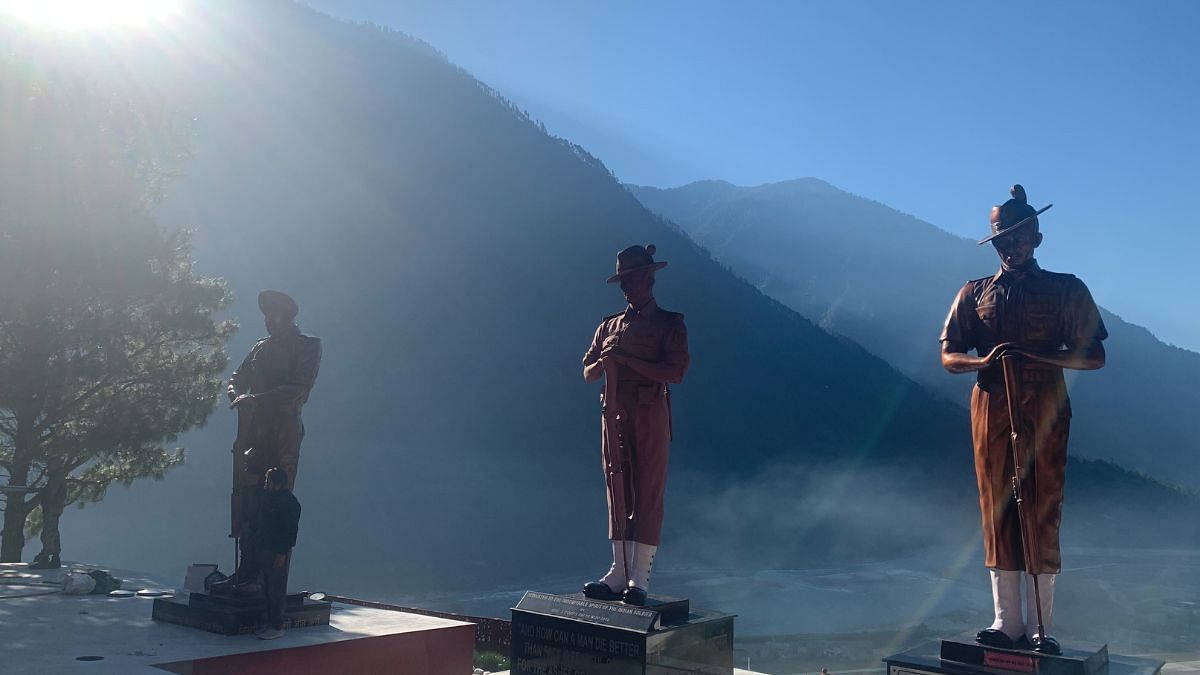
Also read: Naga society wants peace talks to reach logical end. ‘Lollipop assurances by govt dividing Nagas’
Local entrepreneurs
Pramila Rai, 27, and three of her friends run a café in Kibithoo – selling coffee, cookies, momos and noodles. Rai is a graduate from Tezu government college. It was a soft-skills training initiative by the Indian Army about two years ago that gave the four women the confidence to start their own venture. They were awarded course certificates by the Army.
“We take orders for birthday cakes for both civilians and Army personnel. You find a little of everything in Kibithoo now — roads and highway, medical facility, mobile network that reached our village only 3-4 months ago. We can now make best use of our smart phones,” said Rai.
22-year-old Anju Dorji could not complete her schooling, but is delighted that she can now earn for her family as a baker.
“Earlier I used to sit at home. We feel happy when visitors appreciate our work. They prefer cupcakes, coconut cookies and pizza. If Kibithoo is developed, more tourists would come to KFC,” said Dorji.
But not just tourism, Dorji and Rai want quality education for the children in their village.
“We don’t have many teachers at the Kibithoo Government Middle English school. The children here move out to study in Tezu or other places. Medical facilities aren’t adequate. We have good roads, but not enough public transport. The bus service runs only thrice a week,” said Rai.
The tiny Buddhist population of Meyors, who had earlier migrated from across the Indo-Tibetan border into Walong, constitute the bulk of the population in Kibithoo, Kaho and nearby villages. Kibithoo also has a sizeable Nepali community.

Also read: Small-town India gets a new movie experience. Inflatable cinema halls with Dolby, recliners
Tourist on borders
In Kaho, India’s first village that has a population of a little over 100 with 17 households, development has arrived late, but in a significant way. Tourists from across the country are frequenting the village. In recent months, more homestays have sprung up, with owners welcoming visitors with salt-tea, a Tibetan tradition.
“Walong feels like a place straight out of a Christmas postcard – with its tall pines and the beautiful Lohit river. The local people here are warm and welcoming. I think people have much to learn about Arunachal Pradesh and its tourism,” said Sharon, a 27-year-old tourist from Hyderabad.
Posters at homestays in Kaho are raising awareness about the critically endangered and rare White-Bellied Heron, found only in Northeast India, Bhutan, and Myanmar.
“Around 55 of these herons remain in the world, with three believed to be in Walong among the seven spotted in India,” said birder Binanda Hatibaruah from Assam, who frequently conducts trips to Arunachal Pradesh.
A group of women from Kaho and nearby villages are undergoing homestay and housekeeping training under a government initiative, said Kheti Meyor, the gaonburah (village chief).
Opposite the Kaho village, just about 9 km across the LAC, are the Chinese settlements of Tato and Rima. “The sunlight glinting off tin roofs at a distance is Tato,” said one of the villagers, pointing further eastward. These border settlements are also reportedly visible on Google Maps.
The primary objective of India’s vibrant villages programme is to create enough opportunities for local people to stay in their villages and not relocate to towns. Out-migration emboldens the Chinese to further expand their territorial claims beyond the existing deployment, military strategists think.
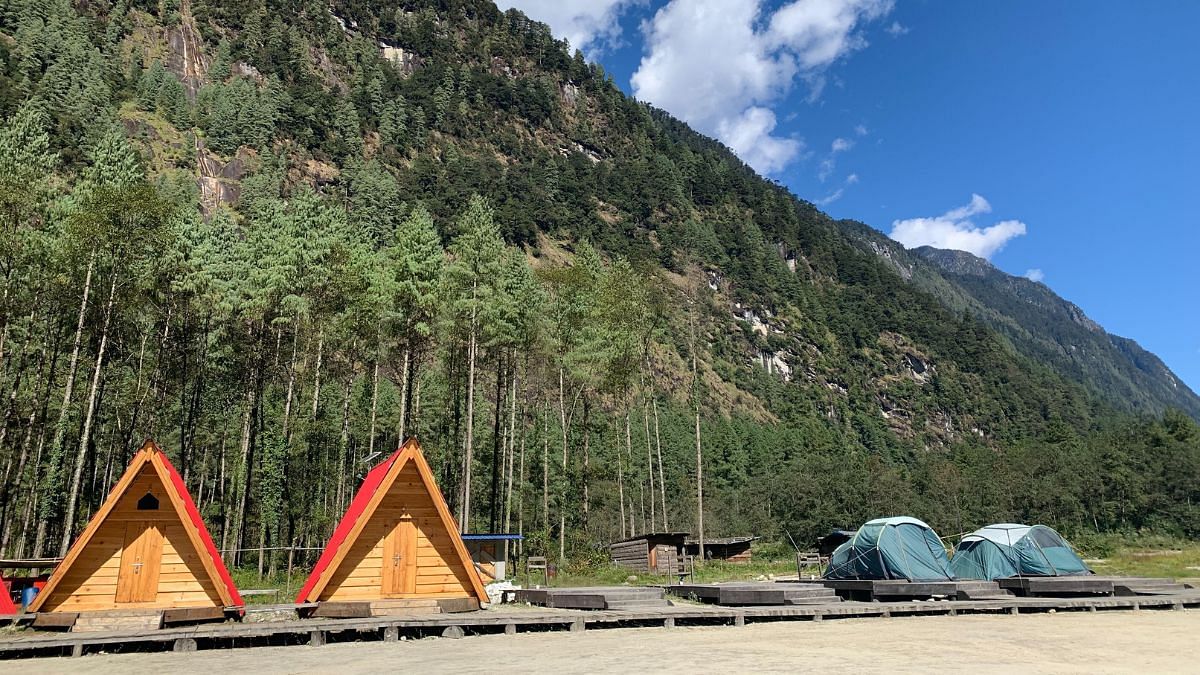
At Kaho, some residents are working on a government road repairing project in the village. While most villagers move out for better prospects, few are absorbed as porters for the Army.
“We are seeing tremendous development in Kaho, and there’s scope for more. We also have full network connectivity since last month. The government has constructed resting sheds, a medical centre, basketball court and a primary school. But we need more than one teacher. Children are still sent to study outside, even to other states,” said Kheti Meyor.
The 50-year-old gaonburah takes much pride in the presence of the Army.
“We are sitting in comfort because of the Army…aaram Se (at ease). We can eat, drink and sleep in peace. Walong has come a long way since 1962. Before, we used to live in fear. It’s really nice, and this sector is peaceful,” said Kheti.
With better roads, troop strength has increased in remote areas. That has brought a sense of security to the Meyors who migrated from Tibet.
While developmental work is changing the landscape, there are also complaints — some said they have not been paid the promised compensation for the work they did.
The gaonburahs of both Kaho and Musai villages, Kheti Meyor and Auo Meyor respectively, alleged they have not received the full amount allocated for constructing the garbage disposal bins under the state Public Health Engineering Department, sometime this year.
ThePrint reached the Deputy Commissioner of Anjaw, Millo Kojin, over phone for a clarification, but no response was received.
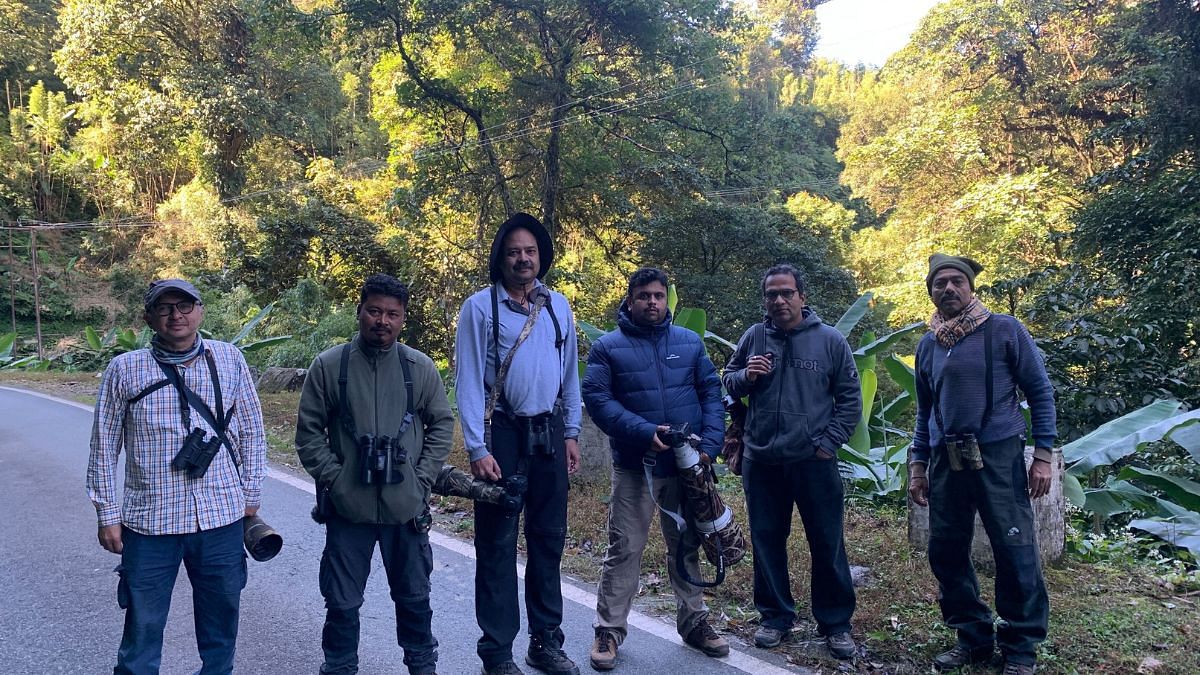
Also read: The Great Indian Sanitation Scam. General castes bag govt jobs, Valmikis do the work
Back to the ‘vibrant villages’
At Acheso, the last village in Anini Circle of Dibang Valley, some villagers gathered outside isolated houses along the narrow road. A locked-up community hall and a health centre stood out in the picturesque setting by the Dri river. The only sound that could be heard was of an elderly woman steadily chopping wood.
In this almost deserted village, life quietly unfolds. 60-year-old Tamange Mili, a forest guard who has dedicated 27 years to protecting the Dibang Wildlife Sanctuary, has witnessed the subtle changes in and around. Tourists are no longer met with curiosity. Villagers know that connectivity is slowly bridging Acheso with the rest of the region.
Mili said improved road conditions has been attracting more tourists to the Dembeun circle. Acheso is about an hour’s drive from Anini headquarters 25 km away, and it takes another 50km to reach the border outpost at Bruni.
“Earlier, our elders took 4-5 days to reach Bruni from Acheso. Now we can make the journey in about an hour. This development is recent – within the past 15 months. It’s only been two weeks that mobile network has reached Acheso. And the Army has helped us a lot by holding regular medical camps,” said Tamange.
From the Mahayana Buddhist Meyor and Miju Mishmi tribes in Walong, to the Idu Mishmis of Dibang Valley, there is a clamour for better connectivity, Army jobs, creation of more tourism opportunities and horticulture prospects. But the major concern for India in these sectors is the dwindling population in the villages, primarily due to out-migration.
The Dibang Valley district is home to the Idu Mishmis, a sub-tribe of the Mishmi ethnic group, alongside the Digaru Mishmi and Miju Mishmi. They are spread across the Mishmi Hills or the districts of Lower Dibang and Dibang Valleys, Lohit, and Anjaw collectively. The Idu Mishmis revere their divine mother, ‘Nanyi Inyitaya.’
People have been motivated to go back to their villages. If we provide facilities, they would surely return. Now with the development of tourism and building of home stays, 3-4 individuals have returned to the villages. Earlier, people who left their homes would not return for 20 years or more.
Anini Sub-Divisional Officer Anmol Singh
—
Acheso has only about 10 houses, and a population of around 225, combined with Angrim Valley, said Mili. Hardly 15-20 people stay in the village, including the gaon burah and the elderly. Everyone gets together only during festivals — Reh and Ke-Meh-Ha celebrated in February and September every year.
Leading up to Acheso, villages like Alinye and Angrim Valley are also poised to be transformed into model villages. Much of the development in the valley can be attributed to military infrastructure projects, which are also meant for civilian use. For people living on either side of the Dri River, Foot Suspension Bridges (FSB) serve as lifelines. In August, a 70-metres FSB at Acheso was repaired by the Army.
“It was an emotional moment for the villagers. Earlier, they had to travel 10km to reach the other side,” said Leche Molo, the gaon burah of Angrim Valley.
The smooth roads have eased out worries for Molo who remembered walking down from his village to Anini as a schoolboy — to collect the free biscuits and jars of Dalda ghee provided by the government to students. “It would take 4-5 hours from Ebamee, now it’s a quick drive,” he said.
Anini Sub-Divisional Officer Anmol Singh too accepted that the trend of migrating from the villages has seen some shift recently.
“People have been motivated to go back to their villages. If we provide facilities, they would surely return. Now with the development of tourism and building of home stays, 3-4 individuals have returned to the villages. Earlier, people who left their homes would not return for 20 years or more,” said Singh.
Residents of Dri villages are building more homestays and eco campsites. And visitors are flocking the popular Chigu Camp resort in the area, best suited for experiencing snowfall in peak winter.
The government also offers trekking tours along the course of the Dri river, and an opportunity to spot rare wildlife like the Mishmi Takin, the Vulnerable (IUCN) goat-antelope species, in the high reaches of Mishmi Hills.
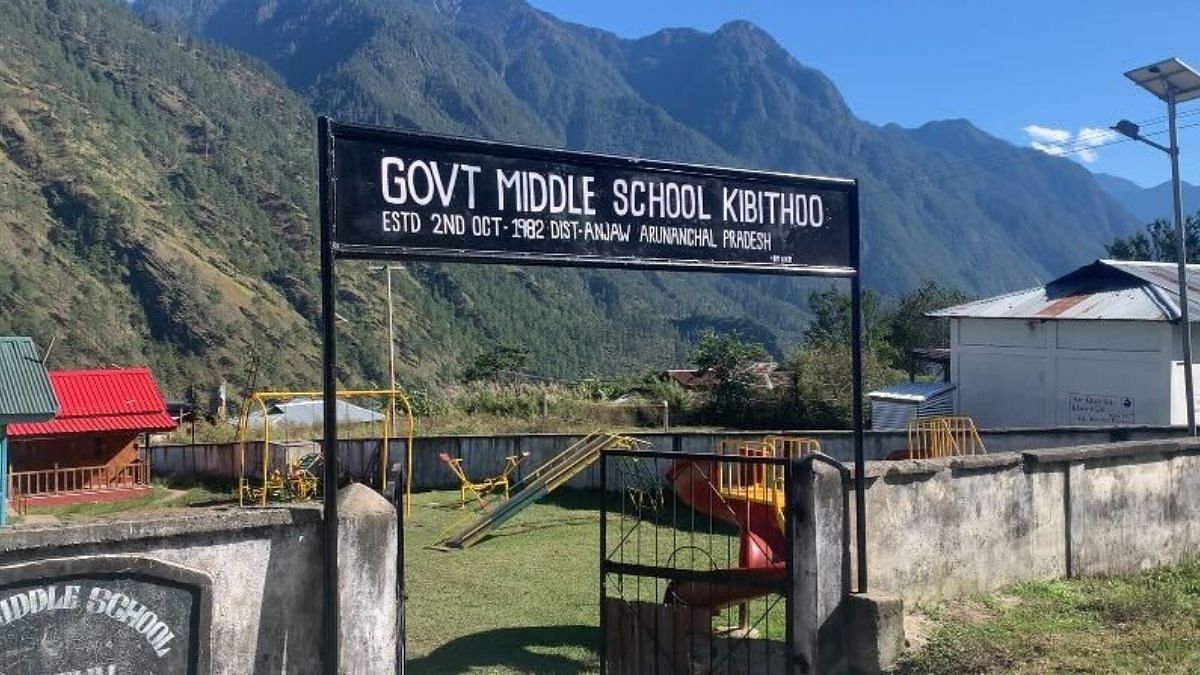
Also read: Arya Samaj weddings are in trouble. Courts cracking down on certificates, conversions
‘They have to stay safe too’
The sun lowers early in Walong, and as the light faded out over the Helmet Top area, Ange Meyor, 52, of Woolong Basti recalled stories from the 1962 India-China war. He remembered the ‘Battle of Walong’ and the visit of late Lieutenant Bikram Singh’s family to his village. They had come looking for any possible remnants of the war to take back home – as a memory. Ange handed them a piece of a rusty rifle bullet shell that he had found years ago.
He lamented that with rapidly evolving technology and development, the Army no longer depends on villagers in border areas to guide them through the terrain — people who know the valley like the back of their hand. “Earlier, few of us were hired as travel guides for the Army, helping them find way from Dong to the Burma border once a year. Now, we rely on daily wages from government projects,” said Ange.
But ever thankful to the military for their presence, Ange demanded better infrastructure for the forces in the hilly and rugged terrain.
“Sometimes, we feel sad to see the Army’s struggles. The government should build tunnels, more lateral structure for the military here. They have to stay safe,” said Ange.

(Edited by Anurag Chaubey)



